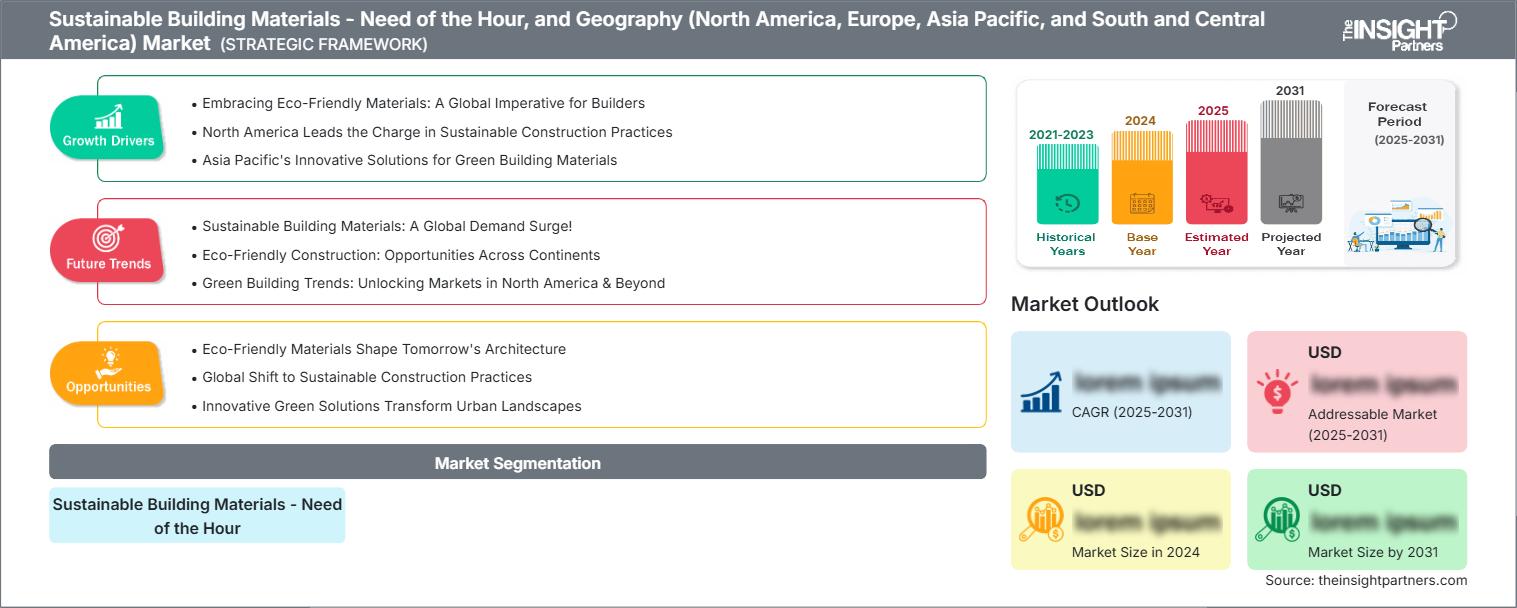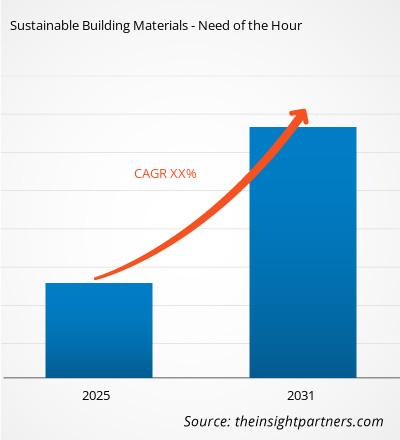La construction est le principal contributeur au développement socio-économique de la plupart des pays et représente la majeure partie de la consommation énergétique. Le bâtiment et la construction sont responsables d'importantes émissions de gaz à effet de serre, ce qui encourage l'adoption de méthodes de construction plus durables. De ce fait, les matériaux de construction durables ont gagné en importance dans le secteur mondial de la construction. Également appelés matériaux de construction écologiques, ils sont économes en énergie et durables. Ils contribuent à garantir un environnement confortable et sain tout au long du cycle de vie du bâtiment. Leur objectif principal est d'optimiser l'utilisation de l'énergie, de l'eau et des matières premières, tout en minimisant l'impact environnemental des bâtiments. Cependant, en raison de la complexité de la mise en œuvre de la durabilité et de la fragmentation du secteur, leur mise en œuvre reste encore embryonnaire.
Vous bénéficierez d'une personnalisation gratuite de n'importe quel rapport, y compris des parties de ce rapport, ou d'une analyse au niveau des pays, d'un pack de données Excel, ainsi que de superbes offres et réductions pour les start-ups et les universités.
Matériaux de construction durables : besoins actuels et géographie du marché (Amérique du Nord, Europe, Asie-Pacifique, Amérique du Sud et Amérique centrale) : perspectives stratégiques

- Obtenez les principales tendances clés du marché de ce rapport.Cet échantillon GRATUIT comprendra une analyse de données, allant des tendances du marché aux estimations et prévisions.
La demande croissante de villes et d'infrastructures durables, due à l'évolution du secteur de la construction, devrait stimuler le marché des matériaux de construction durables. Les grandes entreprises de construction visent à fournir des bâtiments certifiés durables à un coût financier et environnemental réduit. Aux États-Unis, le programme Leadership in Energy and Environmental Design (LEED) du Green Building Council a introduit une nouvelle approche pour les matériaux et produits de construction, élargissant leur rôle dans le processus de certification, de la fabrication à la fin de vie du bâtiment. Grâce à l'avènement de la numérisation et de l'automatisation dans la plupart des secteurs, le secteur de la construction peut se transformer en intégrant les technologies numériques et l'automatisation avancée aux bâtiments et aux infrastructures. Avec 30 à 40 % des déchets solides générés par l'environnement bâti, les matériaux de construction durables offrent au secteur de la construction une opportunité significative de réduire les coûts, de préserver les ressources et de protéger l'environnement.
Les principaux matériaux utilisés comme matériaux de construction durables comprennent l'isolation thermique écologique, le métal recyclé, le bois de récupération, le bambou, le béton cellulaire isolant, le verre recyclé, etc. Ces matériaux sont écologiques et ont un faible impact environnemental lors de la production, de la mise en œuvre et de la maintenance. Ils sont principalement recyclables et d'origine locale. Les entreprises privilégient les bâtiments zéro carbone et optimisent la performance du cycle de vie du bâtiment grâce à l'utilisation de matériaux de construction durables. Des matériaux toujours plus écologiques sont introduits sur le marché, ce qui réduit considérablement les coûts énergétiques de la construction résidentielle et commerciale.
Matériaux de construction durables : besoins actuels et géographie (Amérique du Nord, Europe, Asie-Pacifique, Amérique du Sud et Amérique centrale) ; aperçu régional du marché
Les tendances et facteurs régionaux influençant le marché des Matériaux de construction durables : besoins actuels et géographie (Amérique du Nord, Europe, Asie-Pacifique, Amérique du Sud et centrale) tout au long de la période de prévision ont été analysés en détail par les analystes de The Insight Partners. Cette section aborde également les segments de marché et la géographie de ce marché en Amérique du Nord, en Europe, en Asie-Pacifique, au Moyen-Orient et en Afrique, ainsi qu'en Amérique du Sud et centrale.
Matériaux de construction durables : Besoins actuels et géographie (Amérique du Nord, Europe, Asie-Pacifique, Amérique du Sud et Amérique centrale) Portée du rapport de marché
| Attribut de rapport | Détails |
|---|---|
| Taille du marché en 2024 | XX millions de dollars américains |
| Taille du marché d'ici 2031 | XX millions de dollars américains |
| TCAC mondial (2025 - 2031) | XX% |
| Données historiques | 2021-2023 |
| Période de prévision | 2025-2031 |
| Segments couverts | Matériaux de construction durables : un besoin urgent |
| Régions et pays couverts | Amérique du Nord
|
| Leaders du marché et profils d'entreprises clés |
|
Matériaux de construction durables : besoins actuels et géographie (Amérique du Nord, Europe, Asie-Pacifique, Amérique du Sud et Amérique centrale) ; densité des acteurs du marché : comprendre son impact sur la dynamique des entreprises.
Le marché des matériaux de construction durables – Besoins actuels et géographie (Amérique du Nord, Europe, Asie-Pacifique, Amérique du Sud et Amérique centrale) – connaît une croissance rapide, portée par une demande croissante des utilisateurs finaux, due à des facteurs tels que l'évolution des préférences des consommateurs, les avancées technologiques et une meilleure connaissance des avantages du produit. Face à cette demande croissante, les entreprises élargissent leur offre, innovent pour répondre aux besoins des consommateurs et capitalisent sur les tendances émergentes, ce qui alimente la croissance du marché.

- Obtenez un aperçu des principaux acteurs du marché des matériaux de construction durables : besoins actuels et géographie (Amérique du Nord, Europe, Asie-Pacifique, Amérique du Sud et Amérique centrale)
L'Amérique du Nord et l'Europe sont d'importants utilisateurs de matériaux de construction écologiques ou durables. Plus de la moitié des entreprises de construction ont intégré des bâtiments écologiques à leurs projets. Cependant, les pays en développement comme l'Inde manquent d'incitations pour les bâtiments durables. Lentement mais sûrement, les consommateurs se tournent vers des logements écologiques, contribuant ainsi à la promotion de matériaux de construction durables. En Inde, le Code de la construction verte a intégré des codes et des normes dans les règlements des États, ainsi que des normes établies par des programmes de notation tels que LEED-Inde, l'Indian Green Building Council (IGBC), TERI-GRIHA et d'autres certifications similaires. Il est important que la mise en œuvre de ces politiques soit efficace et que les constructeurs commerciaux bénéficient d'avantages fiscaux et d'une obtention rapide des permis sous forme d'incitations.
L'impact de la construction dure des décennies et affecte les générations actuelles et futures ; il est donc urgent d'adopter des matériaux de construction durables qui ont un impact positif sur l'environnement, pendant la construction et après la fin de vie du bâtiment.
- Analyse historique (2 ans), année de base, prévision (7 ans) avec TCAC
- Analyse PEST et SWOT
- Taille du marché Valeur / Volume - Mondial, Régional, Pays
- Industrie et paysage concurrentiel
- Ensemble de données Excel
Rapports récents
Témoignages
Raison d'acheter
- Prise de décision éclairée
- Compréhension de la dynamique du marché
- Analyse concurrentielle
- Connaissances clients
- Prévisions de marché
- Atténuation des risques
- Planification stratégique
- Justification des investissements
- Identification des marchés émergents
- Amélioration des stratégies marketing
- Amélioration de l'efficacité opérationnelle
- Alignement sur les tendances réglementaires




















 Obtenez un échantillon gratuit pour - Matériaux de construction durables : besoins actuels et géographie (Amérique du Nord, Europe, Asie-Pacifique, Amérique du Sud et Amérique centrale)
Obtenez un échantillon gratuit pour - Matériaux de construction durables : besoins actuels et géographie (Amérique du Nord, Europe, Asie-Pacifique, Amérique du Sud et Amérique centrale)